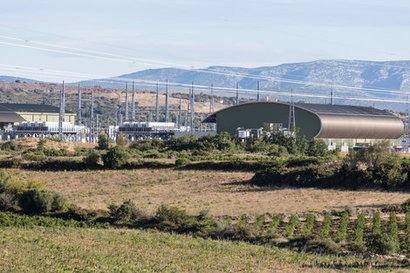
The “ElecLink” high-voltage direct-current (HVDC) link will enhance power supply reliability in both countries and promote the integration of renewable energy sources into the power grid. Siemens will supply the two HVDC converter stations at both sides of the DC power line, which will be routed as a DC cable through the Channel Tunnel, to be supplied by Prysmian and installed by Balfour Beatty. The volume of Siemens‘ share of the order is around 315 million euros. The link is scheduled to take up commercial operation in early 2020.
Jesse Norman, Minister for Industry and Energy, laid the foundation stone of the future converter station on February 23rd, signalling the start of construction. When complete, the station will supply enough electricity to power more than 1.65 million typical households per year.
“With this new interconnection we support our customer ElecLink to implement efficient market trading arrangements and the expanded integration of renewable energy sources” said Ralf Christian, CEO of the Siemens Energy Management Division. “Siemens has already commissioned multiple HVDC links like BritNed, connecting Great Britain and the European continent and is currently implementing further projects like NEMO and now ElecLink.”
Steven Moore, Chief Executive Officer of ElecLink added that the start of construction marks the culmination of years of hard work to make ElecLink a reality. The construction phase of the project will bring together the world’s best engineers and technologies to pursue the construction without interruption of the tunnel’s traffic, and when complete, it will play a key role by helping to solve the governments’ energy trilemma.
The HVDC link between France and Great Britain has been designated as one of the European Commission’s projects of common interest to help create an integrated European Union energy market. As the cable goes through the Channel Tunnel there will be no subsea lay or burial in the Channel.
The scope of the order covers a 1000 MW converter system for a DC voltage of ±320 Kilovolt (kV). The two converter stations, one at Peuplingues in France, the other in Folkestone in the UK, will be linked by a 51 kilometer-long DC power cable. The scope of supply includes the overall system design and the supply, installation and commissioning of all components. The HVDC power modules and HVDC transformers will be manufactured at two Siemens factories in Nuremberg, Germany.
The converter stations will be using HVDC Plus voltage-sourced converters in a modular multilevel converter arrangement (VSC-MMC) that convert AC to DC and DC back to AC on the other side of the link. In contrast to line-commutated converter technology, the HVDC Plus system works with power transistors that can also be switched off (IGBT), enabling the commutation processes in the power converter to run independently of the grid voltage. The very fast control and protective intervention capabilities of the power converters provides a high level of stability in the transmission system, which primarily serves to reduce grid faults and disturbances in the three-phase AC network. This significantly increases supply reliability for utility companies and power customers.
Image: Converter hall of the converter station Baixas at the French side of the HVDC transmission link between France and Spain (Siemens)
For additional information:

